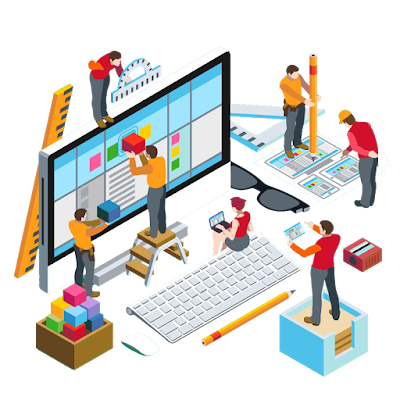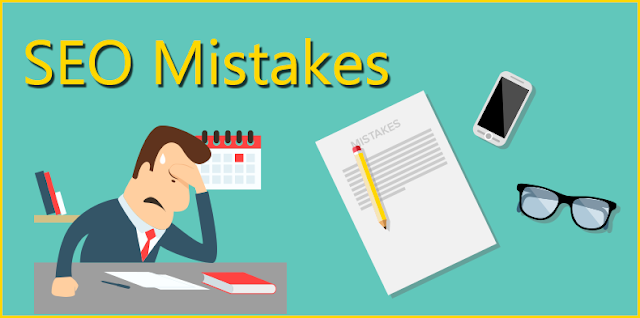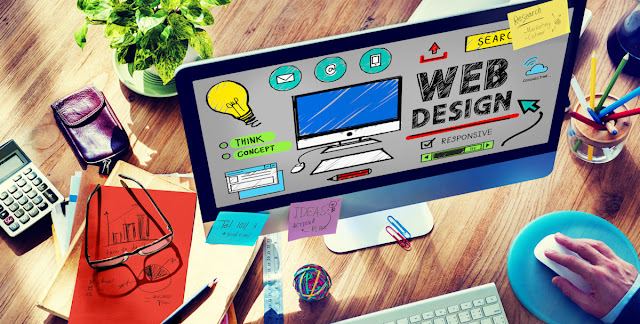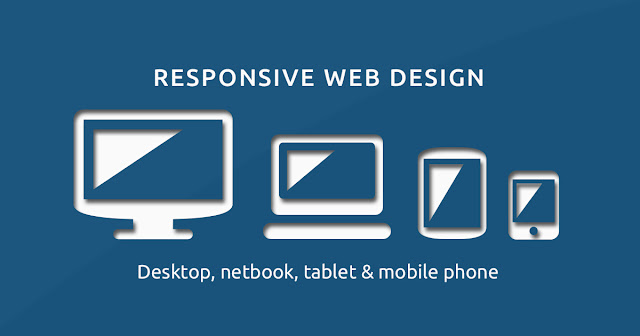A
website is far quite a gaggle of pages connected by links. It’s associate degree interface, an area wherever various things — during this case, someone and a company’s or individual’s net presence — meet, communicate, and have an effect on one another. That interaction creates associate degree expertise for the traveller, and as an internet designer, it’s your job to confirm that have is nearly as good because it will presumably be.
And the key thereto is to believe your user 1st, foremost, and always.
Thankfully, whereas net style may be a comparatively new discipline, it owes lots to the scientific study of human-computer interaction (HCI). And these nine handy tips straight from HCI analysis can assist you target your users once planning websites and apps.
Interface style, that focuses on the layout of practicality of interfaces, may be a set of user expertise style, that focuses on the larger picture: that's, the complete expertise, not simply the interface.
1. recognize your users
Above all else, you have got to grasp who your users are—inside and out. That means knowing all the demographic data your analytics app(s) can pull, yes. But more importantly, it means knowing what they need, and what stands in the way of them achieving their goals.
Getting to that level of empathy requires more than careful analysis of stats. It requires getting to know the people who use your website. It means speaking with them face to face, watching them use your product (and maybe others), and asking them questions that go deeper than, "What do you think of this design?"
What are their goals? What stands in the way of them achieving those goals? How can a website help them overcome or work around those challenges?
Don't stop at knowing what your users want. Dig deeper and find out what they need. After all, desires are just outgrowths of needs. If you can address a user's deep-seated need, you'll address their wants while also fulfilling more fundamental requirements.
The insights you'll uncover from analyzing data and speaking with users will inform every decision you make, from how people use your interface to what types of content you’ll highlight within that interface.
2. Define how people use your interface
Before you style your interface, you wish to outline however individuals can use it. With the increasing prevalence of touch-based devices, it’s a a lot of important concern than you would possibly assume. simply scrutinize
Tinder: the app’s user expertise is virtually outlined by the convenience and impulsivity of an easy swipe.
People use websites and apps in 2 ways: directly (by interacting with part of the product) and indirectly (by interacting with part external to the product).
Examples of direct interactions
Tapping a button
Swiping a card
Dragging associate degreed dropping an item with a tip
Examples of indirect interactions
Pointing and clicking with a mouse
Using key commands/shortcuts
Typing into a type field
Drawing on a Wacom pill
Sometimes, associate degree interaction is simply too straightforward.
Who your users ar and what devices they use ought to deeply inform your choices here. If you’re planning for seniors or others with restricted deftness, you wouldn’t need to rest on swiping. If you’re planning for writers or coders, WHO primarily move with apps via the keyboard, you’ll need to support all the common keyboard shortcuts to reduce time operating with the mouse.
3. Set expectations
Many interactions with a web site(
website development company kochi) or app have consequences: clicking a button will mean pocket money, erasing a web site, or creating a derogatory comment concerning grandma’s cake. And any time there ar consequences, there’s conjointly anxiety.
So make sure to let users recognize what's going to happen once they click that button before they are doing it. you'll try this through style and/or copy.
Setting expectations with style
Highlighting the button that corresponds to the specified action
Using a wide understood image (such as a wastebin for a delete button, a sign to feature one thing, or a hand glass for search) together with copy
Picking a color with a relevant that means (green for a “go” button, red for “stop”)
Setting expectations with copy
Writing clear button copy
Providing directional/encouraging copy in empty states
Delivering warnings and soliciting for confirmation
For actions with irreversible consequences, like for good deleting one thing, it is sensible to raise individuals if they’re positive.
In InVision, clicking the trashcan icon doesn’t right away delete a screen. Instead, it asks if you are positive and allows you to understand it cannot be undone.
4. Anticipate mistakes
> To err is human; to forgive, divine.
Alexander Pope, "An Essay on Criticism"
People build mistakes, however they shouldn’t (always) got to suffer the implications. There ar 2 ways that to assist reduce the impact of human error:
Prevent mistakes before they happen
Provide ways that to mend them once they happen
You see lots of mistake-prevention techniques in ecommerce (
ecommerce website development company kochi)and type style. Buttons stay inactive till you fill out all fields. Forms notice that associate degree email address hasn’t been entered properly. Pop-ups raise you if you actually need to abandon your cart (yes, I do, Amazon—no matter what proportion it's going to scar the poor thing).
Anticipating mistakes is commonly less frustrating than making an attempt to mend them once the actual fact. That’s as a result of they occurbefore the satisfying sense of completion that comes with clicking the “Next” or “Submit” button will set in.
That said, generally you only got to let accidents happen. That’s once careful error messages extremely get their own.
When you’re writing error messages, certify they are doing 2 things:
Explain the matter. E.g., “You same you were born on Mars, that humans haven’t settled. Yet.”
Explain the way to fix it. E.g., “Please enter a birthplace here on Earth.”
Note that you simply will take a page from that very same book for non-error things. as an example, if I delete one thing, however it’s doable to revive it, let Pine Tree State recognize that with a line of copy like “You will perpetually restore deleted things by aiming to your Trash and clicking Restore.”
The principle of anticipating user error is termed the poka-yoke principle. Poka-yoke may be a Japanese term that interprets to “mistake-proofing.”
5. provide feedback—fast
In the planet, the surroundings provides America feedback. We speak, et al respond (usually). we tend to scratch a cat, and it purrs or hisses (depending on its moodiness and the way abundant we tend to suck at cat scratching).
All too typically, digital interfaces fail to convey abundant back, going America inquisitive whether or not we should always reload the page, restart the laptop computer, or simply fling it out the closest accessible window.
So provide Pine Tree State that loading animation. build that button pop and snap back once I faucet it—but not an excessive amount of. and provides Pine Tree State a virtual motion once I do one thing you and that i agree is amazing. (Thanks, MailChimp.)
MailChimp offers each feedback associate degreed encouragement after you schedule or send an email.
Just certify it all happens quick. Usability.gov defines any delay over one second as an intermission. Over ten seconds, a pause. and also the latter’s generous: for concerning [*fr1] the U.S. population, three seconds is enough to cause a bounce.
If a page can load in below five seconds, don’t show a progress bar, as it’ll truly build the loading time appear longer. Instead, use a visualisation that doesn’t imply progress, like Mac’s notorious “pinwheel of death.” however not that. If you are doing use progress bars on your web site, take into account making an attempt some visual tricks to create the load appear quicker.
6. think twice concerning part placement and size
Fitts’ Law, a principle of human-computer interaction (HCI), states that:
The time to amass a target may be a perform of the space to and size of the target.
In different words: the nearer and/or larger one thing is, the quicker you'll place your indicator (or finger) thereon. This clearly has every kind of implications for interaction and UI style, however 3 of the foremost necessary are:
Make buttons and different “click targets” (like icons and text links) sufficiently big to simply see and click on. this can be particularly necessary with menus and different link lists, as depleted house can leave individuals clicking the incorrect links once more and once more.
Make the buttons for the foremost common actions larger and a lot of distinguished.
Place navigation (and different common interactive parts, like search bars) on the perimeters or corners of the screen. This last might sound unreasonable, however it works as a result of it lessens the necessity for accuracy: a user doesn’t ought to worry concerning overshooting their click target.
While you’re considering part putting and size, perpetually keep your interaction model in mind. If your web site needs horizontal scrolling instead of vertical scrolling, you’ll ought to take into account wherever and the way to cue users to the present uncommon interaction kind.
7. Don’t ignore standards
Being extremely inventive varieties, designers tend to like to reinvent things—but it’s not perpetually the simplest plan.
Why? as a result of a revamped version of a well-recognized interaction or interface adds “cognitive load”: it makes individuals reconsider a few method they’ve already learned. Obviously, you'll reinvent the wheel all you want—but given that it truly improves the look.
This rule of thumb explains why Google Docs’ menu bar options most a similar choices as Microsoft Word’s before Vista:
It conjointly explains why Pocket had to vary the position of the archive button in their golem app many years back.
Changing one button to be a lot of in step with Android's style patterns created new users twenty third a lot of probably to stay mistreatment Pocket.
Up until fall 2013, the archive button was at the highest left of the screen—right wherever golem style specs same the “Up” button ought to be. Pocket needed to focus individuals on the reading expertise, associate degreed not duplicate an existing hardware management, however the inconsistent placement caused new users to accidentally shut and archive the article they were reading, instead of merely returning to their reading list needless to say.
That small modification "increased the probability [new users] would continue mistreatment Pocket from now forrader by twenty third."
8. build your interfaces straightforward to be told
When it involves simplicity, individuals typically cite a paper by Harvard man of science Saint George Miller known as, “The supernatural range Seven, and or Minus Two: Some Limits on our capability for process info.” The article suggests that individuals will solely hold five to nine things in their short term memory with any responsibleness. Miller himself known as this a coincidence, however that doesn’t appear to carry anyone back from citing him.
That said, it’s solely logical that the easier one thing is, the better it's to recollect within the short term. So, whenever doable, limit the quantity of things someone has to keep in mind to use your interface expeditiously and effectively. you'll facilitate this by unitization info, i.e., breaking it into little, edible chunks.
This idea dovetails with Tesler’s Law of Conservation of quality, that states that UI designers ought to build their interfaces as easy as doable. that may mean masking the quality of associate degree application behind a simplified interface whenever doable. a preferred example of a product failing to follow this law is Microsoft Word.
Most people solely do many things in Word—e.g., typing—while others will use it to try and do all types of powerful things. however round the world, everyone opens a similar version of Word, with a similar UI, going your average Joe—who's not an influence user—overwhelmed by the range of choices they’ll in all probability ne'er use.
This diode to a plan known as progressive revelation, wherever advanced options ar tucked away on secondary interfaces. You’ll typically see this on websites’ home pages, wherever short chunks of copy introduce a product or feature, then link off to a page wherever users will learn a lot of. (This conjointly happens to be a best observe for mobile style, wherever sturdy navigation is often a challenge.)
Pro tip: Avoid mistreatment “learn more” and equally non-specific text in links and buttons. Why? as a result of it doesn’t tell users what they’ll “learn more” concerning. Often, individuals merely scan a page craving for a link that takes them wherever they need to travel, and “learn more,” repeated 15 times, doesn’t help. This is especially true for users of screen readers.
9. Make decision-making simple
Too much of the web screams at us: “Banners” suddenly expand to become full-screen ads. Modals pop up, imploring us to subscribe to blogs we haven’t had a chance to, you know, read yet. Video interstitials stop us in our tracks, forcing us to watch precious seconds tick oh-so-slowly by. And don’t even get me started on the widgets, flyouts, tooltips …
Sometimes I long for a calmer web—and Hicks’ Law gives us all a reason to build one. The idea’s as simple as its end result: the more options you present a user, the harder it becomes for them to make a decision.
web designing company in kochi
This impacts almost everything we build:
Overall layouts
Navigation menus
Pricing pages
Blog indexes
Content feeds
The list goes on. But the upshot is: the simpler we make our designs, the faster and easier it is for users to make the decisions we want them to make. That’s exactly why landing pages and non-newsletter emails should only have one call to action.
Pro tip: Sometimes, you actually do want users to slow down and consider their options. That’s why the tiled designs of Pinterest, Dribbble, and many blogs actually work well. After all, the more options you have to decide between, the more likely it is you’ll find one that works for you.
10. Listen to the data
While we all might wish our designs were evaluated purely on their artistic merit, the reality is that optimizing your design to meet its objective is just as important.
While user research and testing can be incredibly helpful in guiding your design decisions toward fulfillment of your site’s goal, data gathered after launch remains invaluable.
So set up analytics for your site, and analyze them regularly. There’s a bunch of different analytics tools out there, but I recommend Google Analytics and/or Mixpanel, reckoning on the project kind.
Mixpanel focuses on events, thus it collects information supported actions a traveller takes on your web site, whereas Google Analytics is a lot of activity, supplying you with session times, traffic sources, etc. whereas each tools will offer each types of information, they extremely shine in their focus areas, thus select whichever most closely fits your wants.
Note: each of those tools ar free for up to a precise quantity of information points. Webflow and similar platforms typically build analytics setup straightforward through an easy API key exchange.









